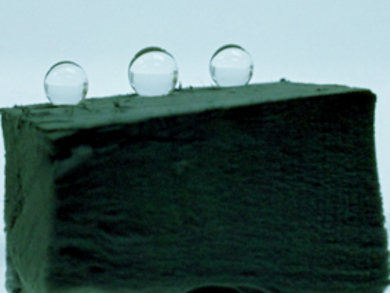An oil spill needs timely cleanup before it spreads and poses a serious environmental threat to the polluted area. Large-scale cleanup techniques need to be both efficient and cost-effective. Sponge-like sorbents have displayed outstanding oil sorption performance. In particular, highly porous carbonaceous sponges have demonstrated a lot of potential. However, large-scale use of carbonaceous sponges is restricted by the complex and costly fabrication process.
Darren Sun, Nanyang Technological University, Singapore, and co-workers have overcome this by fabricating a sponge made of carbon-silica nanofibers by using electrospinning in conjunction with thermal treatment. Such a fabrication process is advantageous because electrospinning is versatile, inexpensive, and easily scalable.
The sponge displayed a fast uptake rate for various kinds of petroleum-derived products and organic solvents and had a maximum sorption capacity up to 140 g g–1. The sponge was particularly suitable for the selective removal of oil from water owing to its inherent hydrophobicity, oleophilicitiy, and high porosity (>99 %). In addition, the sponge had good mechanical stability and compressibility, which means that the pollutants could be recovered and the sponge regenerated by simple squeezing or cyclic distillation.
- A Self-Assembled Superhydrophobic Electrospun Carbon–Silica Nanofiber Sponge for Selective Removal and Recovery of Oils and Organic Solvents,
Ming Hang Tai, Benny Yong Liang Tan, Jermyn Juay, Darren D. Sun, James O. Leckie,
Chem. Eur. J. 2015.
DOI: 10.1002/chem.201405670




